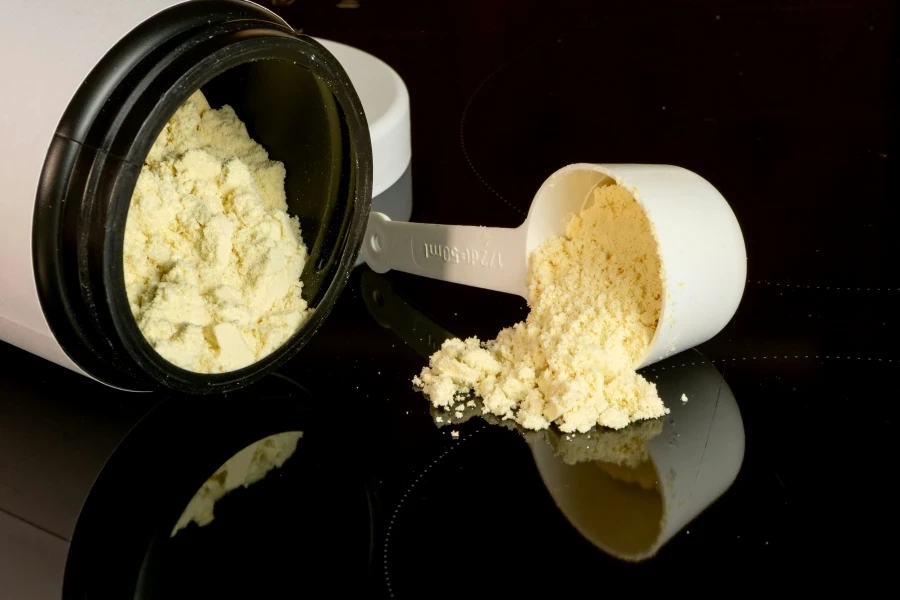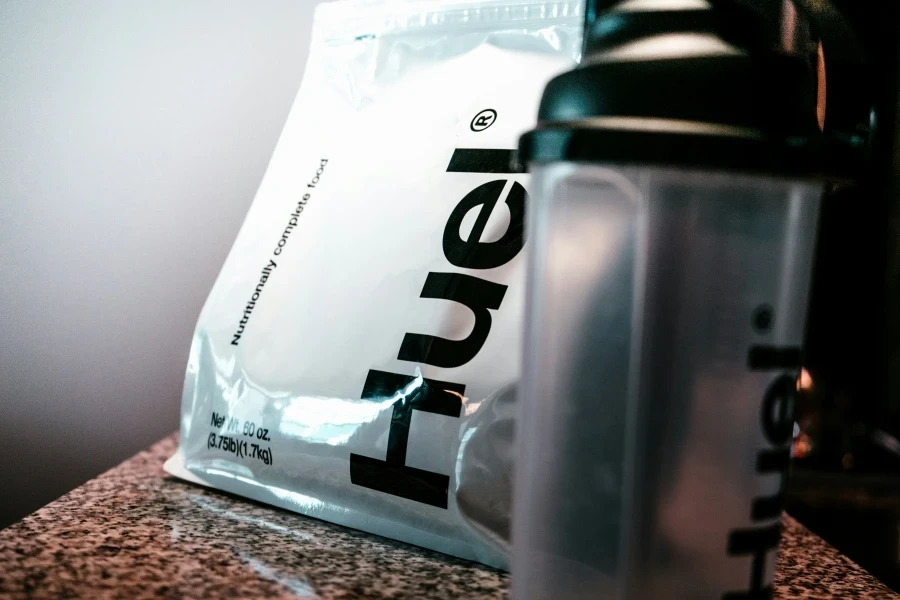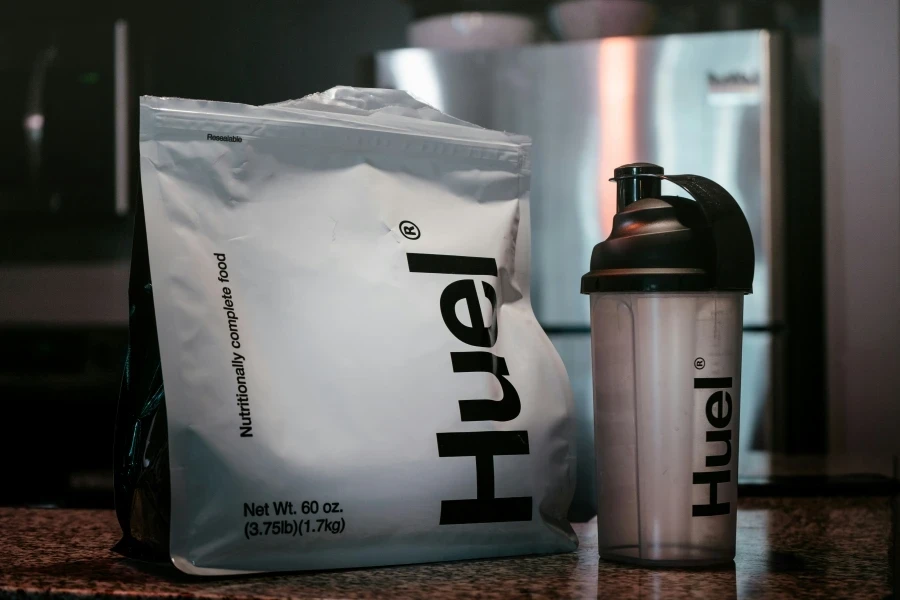The UK protein powder market has seen significant growth in recent years, driven by increasing health consciousness and the rising popularity of fitness regimes. This article delves into the current market size, key players, and consumer demographics shaping the industry.
Table of Contents:
Market Overview of UK Protein Powder
Innovative Ingredients and Materials in UK Protein Powder
Design and Packaging Trends in Protein Powder
Technological Advancements in Protein Powder Production
Benefits and Performance of UK Protein Powder
Market Overview of UK Protein Powder

Current Market Size and Growth
The UK protein powder market has experienced robust growth over the past few years. According to a professional report, the market size was valued at approximately £500 million in 2022 and is projected to grow at a compound annual growth rate (CAGR) of 7.5% from 2023 to 2028. This growth is fueled by an increasing number of health-conscious consumers and the rising popularity of fitness and wellness trends.
The demand for protein supplements is not just limited to athletes and bodybuilders; it has expanded to include a broader demographic, including older adults and those looking to maintain a healthy lifestyle. The market’s expansion is also supported by the growing trend of plant-based diets, which has led to an increase in the availability of plant-based protein powders.
Key Players and Brands
The UK protein powder market is highly competitive, with several key players dominating the landscape. Some of the leading brands include Myprotein, Optimum Nutrition, and Bulk Powders. These brands have established a strong presence through extensive marketing campaigns, high-quality products, and a wide range of offerings to cater to different consumer needs.
Myprotein, for instance, is known for its extensive range of protein powders, including whey, casein, and plant-based options. Optimum Nutrition, another major player, is renowned for its Gold Standard Whey, which is one of the best-selling protein powders globally. Bulk Powders has also made a name for itself with its commitment to quality and transparency, offering a variety of protein sources and flavors.
Consumer Demographics and Preferences
The consumer base for protein powders in the UK is diverse, spanning various age groups and fitness levels. According to a professional report, the primary consumers are individuals aged 18-35, who are highly engaged in fitness activities and are looking for convenient ways to meet their protein needs. However, there is also a growing segment of older adults who are incorporating protein supplements into their diets to support muscle maintenance and overall health.
Consumer preferences are shifting towards more natural and clean-label products. There is a growing demand for protein powders that are free from artificial additives, sweeteners, and allergens. This trend is particularly evident among younger consumers who are more health-conscious and environmentally aware. As a result, many brands are now offering organic, non-GMO, and allergen-free options to cater to this demand.
Innovative Ingredients and Materials in UK Protein Powder

Plant-Based vs. Animal-Based Proteins
The UK protein powder market has seen a significant shift towards plant-based proteins, driven by increasing consumer awareness of health, environmental, and ethical concerns. Plant-based protein powders, derived from sources such as peas, hemp, and brown rice, are gaining popularity as they cater to the growing vegan and vegetarian population. According to a professional report, the demand for plant-based proteins is expected to grow at a compound annual growth rate (CAGR) of 8.1% from 2023 to 2028. This trend is further supported by the rising number of consumers seeking allergen-free and easily digestible protein sources.
On the other hand, animal-based proteins, particularly whey and casein, continue to dominate the market due to their high bioavailability and complete amino acid profile. Whey protein, a byproduct of cheese production, remains a popular choice among athletes and fitness enthusiasts for its rapid absorption and muscle recovery benefits. However, the market share of animal-based proteins is gradually being challenged by the increasing preference for plant-based alternatives.
Organic and Natural Ingredients
The demand for organic and natural ingredients in protein powders is on the rise, as consumers become more conscious of the potential health risks associated with synthetic additives and pesticides. Organic protein powders, which are free from genetically modified organisms (GMOs), artificial sweeteners, and preservatives, are gaining traction among health-conscious consumers. A report by Euromonitor International indicates that the global market for organic protein powders is projected to grow at a CAGR of 7.5% from 2023 to 2028.
Natural ingredients, such as stevia and monk fruit, are increasingly being used as sweeteners in protein powders, replacing artificial sweeteners like aspartame and sucralose. Additionally, the use of superfoods, such as spirulina, chlorella, and maca, is becoming more prevalent in protein powder formulations, offering added nutritional benefits and appealing to the health-conscious consumer.
Allergen-Free and Specialty Formulations
The UK protein powder market is also witnessing a surge in demand for allergen-free and specialty formulations, catering to consumers with specific dietary needs and preferences. Allergen-free protein powders, which exclude common allergens such as dairy, soy, and gluten, are becoming increasingly popular among individuals with food sensitivities and intolerances. According to a report, the market for allergen-free protein powders is expected to grow at a CAGR of 6.8% from 2023 to 2028.
Specialty formulations, such as keto-friendly, paleo, and low-carb protein powders, are also gaining traction as consumers adopt various dietary lifestyles. These formulations often incorporate unique ingredients, such as collagen peptides and medium-chain triglycerides (MCTs), to cater to specific dietary requirements and preferences.
Design and Packaging Trends in Protein Powder

Eco-Friendly and Sustainable Packaging
Sustainability is a key trend in the UK protein powder market, with consumers increasingly seeking eco-friendly packaging solutions. Brands are responding by adopting recyclable, biodegradable, and compostable packaging materials to reduce their environmental footprint. According to a report by Euromonitor International, the global market for sustainable packaging is projected to grow at a CAGR of 6.2% from 2023 to 2028.
Innovative packaging solutions, such as reusable containers and bulk packaging options, are also gaining popularity as they help reduce plastic waste and promote a circular economy. Additionally, brands are incorporating minimalist and eco-friendly designs, using fewer materials and reducing excess packaging to appeal to environmentally conscious consumers.
Convenient and Portable Packaging Solutions
Convenience and portability are essential factors driving the design and packaging trends in the protein powder market. Single-serve sachets, ready-to-drink (RTD) protein shakes, and portable tubs are becoming increasingly popular among busy consumers seeking on-the-go nutrition. According to a report, the market for RTD protein shakes is expected to grow at a CAGR of 7.9% from 2023 to 2028.
These convenient packaging solutions cater to the growing demand for quick and easy protein intake, particularly among fitness enthusiasts and athletes. Additionally, resealable and easy-to-use packaging designs, such as zip-lock pouches and scoop-included containers, enhance user experience and convenience.
Aesthetic and Branding Considerations
Aesthetic and branding considerations play a crucial role in the protein powder market, as consumers are drawn to visually appealing and well-designed packaging. Brands are investing in high-quality graphics, vibrant colors, and sleek designs to create a strong shelf presence and attract consumers. According to a report by Euromonitor International, the global market for premium packaging is projected to grow at a CAGR of 5.8% from 2023 to 2028.
In addition to aesthetics, brands are focusing on clear and transparent labeling, highlighting key product attributes such as protein content, ingredient sources, and certifications (e.g., organic, non-GMO, allergen-free). This helps build consumer trust and confidence in the product, ultimately driving purchase decisions.
Technological Advancements in Protein Powder Production

Enhanced Bioavailability and Absorption
Technological advancements in protein powder production are focused on enhancing the bioavailability and absorption of protein. Techniques such as microencapsulation and enzymatic hydrolysis are being employed to improve the solubility and digestibility of protein powders. According to a report, the market for bioavailable protein supplements is expected to grow at a CAGR of 6.5% from 2023 to 2028.
Microencapsulation involves coating protein particles with a protective layer, which helps improve stability and absorption in the digestive tract. Enzymatic hydrolysis, on the other hand, breaks down protein molecules into smaller peptides, making them easier to digest and absorb. These advancements are particularly beneficial for individuals with digestive issues and those seeking rapid muscle recovery.
Flavor and Texture Improvements
Flavor and texture are critical factors influencing consumer preference and satisfaction in the protein powder market. Technological innovations, such as advanced flavor masking techniques and the use of natural flavor enhancers, are being employed to improve the taste and mouthfeel of protein powders. According to a report, the market for flavored protein powders is projected to grow at a CAGR of 7.2% from 2023 to 2028.
Natural flavor enhancers, such as vanilla bean extract and cocoa powder, are being used to create a more enjoyable taste experience, while advanced processing techniques help achieve a smoother and creamier texture. These improvements are essential for attracting and retaining consumers, particularly those who may have been deterred by the traditionally chalky and unpalatable taste of protein powders.
Customization and Personalization Options
Customization and personalization are emerging trends in the protein powder market, driven by the growing demand for tailored nutrition solutions. Brands are offering customizable protein powders, allowing consumers to select their preferred protein sources, flavors, and additional ingredients (e.g., vitamins, minerals, superfoods). According to a report, the market for personalized nutrition is expected to grow at a CAGR of 8.4% from 2023 to 2028.
This trend is supported by advancements in digital technology, such as online platforms and mobile apps, which enable consumers to create and order their personalized protein blends. Additionally, brands are leveraging data analytics and artificial intelligence to offer personalized recommendations based on individual health goals, dietary preferences, and lifestyle factors.
Benefits and Performance of UK Protein Powder

Muscle Building and Recovery
Protein powders are widely recognized for their role in muscle building and recovery, making them a staple in the diets of athletes and fitness enthusiasts. The high protein content in these powders helps stimulate muscle protein synthesis, promoting muscle growth and repair. According to a report, the market for sports nutrition products, including protein powders, is projected to grow at a CAGR of 6.9% from 2023 to 2028.
Whey protein, in particular, is known for its rapid absorption and high leucine content, which is essential for muscle protein synthesis. Plant-based proteins, such as pea and hemp, also provide a complete amino acid profile, supporting muscle recovery and growth.
Weight Management and Satiety
Protein powders are also beneficial for weight management and satiety, as they help control appetite and reduce overall calorie intake. High-protein diets have been shown to increase feelings of fullness and reduce hunger, making it easier for individuals to adhere to their weight loss goals. According to a report, the market for weight management products, including protein powders, is expected to grow at a CAGR of 7.1% from 2023 to 2028.
Protein powders can be incorporated into meal replacement shakes or snacks, providing a convenient and low-calorie option for those looking to manage their weight. Additionally, the thermogenic effect of protein, which increases calorie expenditure during digestion, further supports weight loss efforts.
Overall Health and Wellness
Beyond muscle building and weight management, protein powders offer a range of health and wellness benefits. They provide essential amino acids, vitamins, and minerals that support overall health, including immune function, bone health, and cardiovascular health. According to a report, the market for health and wellness products, including protein powders, is projected to grow at a CAGR of 6.7% from 2023 to 2028.
Protein powders can also be fortified with additional nutrients, such as probiotics, antioxidants, and omega-3 fatty acids, to enhance their health benefits. This makes them a versatile and convenient option for individuals seeking to improve their overall well-being.
Conclusion
The UK protein powder market is evolving rapidly, driven by innovative ingredients, sustainable packaging, technological advancements, and a growing focus on health and wellness. As consumer preferences continue to shift towards plant-based, organic, and personalized nutrition solutions, the market is poised for significant growth in the coming years. Brands that prioritize sustainability, convenience, and customization will be well-positioned to capture the attention of health-conscious consumers and thrive in this dynamic market.




